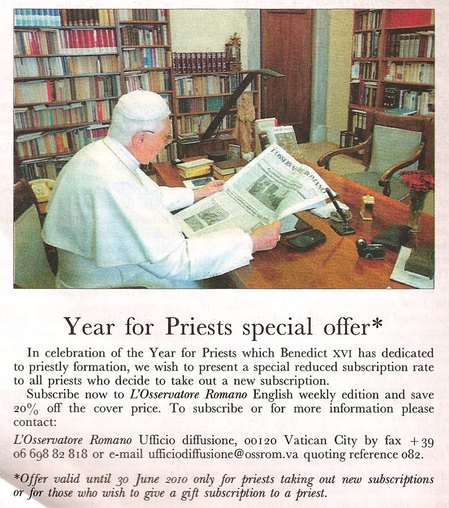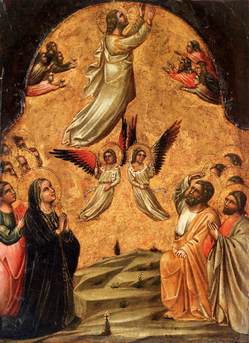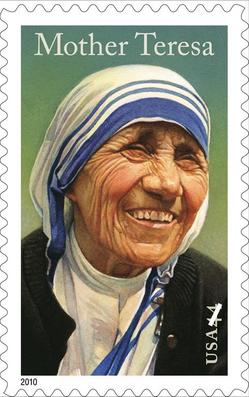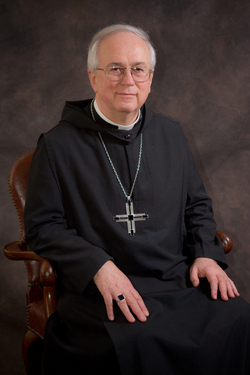My Mother Saint Gianna: an evening of conversation & prayer with a saint’s son
This coming Monday,
May 17, the Church of St Catherine of Siena in Manhattan will host a lecture by
Pierluigi Molla, the son of St Gianna Berretta Molla, as part of an evening of prayer
for couples struggling with infertility.
Please
join the physicians and staff of The Gianna Center
for Women this Monday, May 17 at 6:30 pm for a special Mass,
offered for the intentions of couples struggling with infertility and
pregnancy-related miscarriages.
The Mass will be
followed by a talk by Pierluigi Molla, the living son of St. Gianna Beretta Molla and
an opportunity to view and venerate her relics.
Location: St.
Catherine of Siena Church, 411 East 68th Street, NY (between 1st Ave and York)
Schedule of
Events
6:30 pm Mass,
offered for the intentions of couples suffering from infertility, recurrent
miscarriage and difficult pregnancies
7:30 pm Talk by
Pierluigi Molla, son of St. Gianna
8:15 pm Blessing
with St. Gianna’s relics
8:30 pm Light
reception and book signing
Physicians from
The Gianna Center in midtown Manhattan, which offers a highly effective,
ethically-sound approach to treating infertility, will also be present to
answer questions and offer support.
Ascension Thursday: What is the Church’s teaching?
What is the consistent, clear teaching of the Church, that
is, what has been taught down through the ages, about the Ascension of the Lord? What does it
mean for the Lord to “ascend” to the right hand of God the Father? Does he actually go up into the heavens?
The Gospel
of Luke tells us that Jesus blessed his disciples and then “parted from them and
was taken up to heaven.” And the Acts of the Apostles tells us that the
disciples witnessed the Lord’s ascension. So, the Scripture relate to us that
Jesus’ ascension was a public act which we too, follow according the Father’s
will.
Let me be crystal clear about the teaching: the ascension of the Lord is
not only concerned with Christ’s humanity; the ascension of the Lord is also
about our humanity ascension to God’s right hand in glory.
You will want to read–NO, you must read and re-read Credo for Today by Joseph Cardinal Ratzinger (Benedict XVI) pp 90-94. It is the best of the Church’s contemporary theological reflections on this point of our faith.
Pope Saint Leo the Great (+461)
taught, “Truly it was a great and indescribable source of rejoicing when, in
the sight of the heavenly multitudes, the nature of our human race ascended over
the dignity of all heavenly creatures, to pass the angelic orders and to be
raised beyond the heights of archangels. In its ascension it did not stop at
any other height until this same nature was received at the seat of the eternal
Father, to be associated on the throne of the glory of that One to whose nature
it was joined in the Son” (from a homily on 1 June 444).
And just a year later Saint Leo says, “This Faith, reinforced by the Ascension of the Lord and
strengthened by the gift of the Holy Spirit, has not been terrified by chains,
by prison, by exile, by hunger, by fire, by the mangling of wild beasts, nor by
sharp suffering from the cruelty of persecutors. Throughout the world, not
only men but also women, not just immature boys but also tender virgins, have
struggled on behalf of this Faith even to the shedding of their blood. This
Faith has cast out demons, driven away sicknesses, and raised the dead” (from a homily on 17 May
445).
In the Catechism of the Catholic Church we read, “This final stage stays
closely linked to the first, that is, to his descent from heaven in the
Incarnation. Only the one who ‘came from the Father’ can return to the Father:
Christ Jesus. ‘No one has ascended into heaven but he who descended from
heaven, the Son of man.’ Left to its own natural powers humanity does not have
access to the ‘Father’s house’, to God’s life and happiness. Only Christ can
open to man such access that we, his members, might have confidence that we too
shall go where he, our Head and our Source, has preceded us” (661).
Blessed Imelda Lambertini
 Lord Jesus Christ, you received into heaven Blessed Imelda who loved you in the eucharistic banquet. By her prayers may we learn to approach your holy table with that same fervent love and so fulfill our longing to be with you, who live and reign with the Holy Spirit, one God, for ever and ever.
Lord Jesus Christ, you received into heaven Blessed Imelda who loved you in the eucharistic banquet. By her prayers may we learn to approach your holy table with that same fervent love and so fulfill our longing to be with you, who live and reign with the Holy Spirit, one God, for ever and ever.
Empire State Building stiffs Catholic League
Catholic League president Bill Donohue comments as
follows:
On August 26, the U.S. Postal Service is honoring the 100th
anniversary of the birth of Mother Teresa. On February 2, I submitted an
application to the Empire State Building Lighting Partners requesting that the
tower lights feature blue and white, the colors of Mother Teresa’s
congregation, the Missionaries of Charity, on August 26. On May 5, the request
was denied without explanation.
Mother Teresa received 124 awards, including
the Nobel Peace Prize, the Presidential Medal of Freedom and the Congressional
Medal of Freedom. She built hundreds of orphanages, hospitals, hospices, health
clinics, homeless shelters, youth shelters and soup kitchens all over the
world, and is revered in India for her work. She created the first hospice in
Greenwich Village for AIDS patients. Not surprisingly, she was voted the most
admired woman in the world three years in a row in the mid-1990s. But she is
not good enough to be honored by the Empire State Building.
Last year the
Empire State Building shone in red and yellow lights to honor the 60th
anniversary of the Chinese Communist Revolution. Yet under its founder, Mao
Zedong, the Communists killed 77 million people. In other words, the greatest
mass murderer in history merited the same tribute being denied to Mother
Teresa.
We are launching a nationwide petition drive protesting this
indefensible decision (TO SIGN THE PETITION, Click here). We are petitioning
Anthony Malkin, the owner of the Empire State Building, to reverse this
decision.
To protest this decision, contact: lightingpartner@esbnyc.com
May is Mary’s month
May is a month that is loved and its arrival is welcome for
several reasons. In our hemisphere spring advances with so many and colorful
blossoms; the climate is favorable for walks and excursions. For the liturgy,
May always belongs to the Easter Season, the season of the
“alleluia,” of the revelation of the mystery of Christ in the light
of the Resurrection and of the Easter faith; and it is the time of expectation
of the Holy Spirit, who descends with power on the nascent Church at Pentecost.
With both these contexts, the “natural” and the liturgical, the
tradition of the Church is well in tune in dedicating the month of May to the
Virgin Mary. She is, in fact, the most beautiful flower to blossom in creation,
the “rose” that appeared in the fullness of time, when God, sending
his Son, gave the world a new spring. And she is at the same time humble and
discreet protagonist of the first steps of the Christian community: Mary is its
spiritual heart, because her very presence in the midst of the disciples is a
living memory of the Lord Jesus and pledge of the gift of his Spirit.
Pope Benedict XVI, Regina Caeli Address, 9 May 2010
Supreme Court, Faith and Culture
Every time we get a new Supreme Court Justice nominee, I cringe because of the craziness that goes on at the confirmation hearings: it’s not only about philosophical attachments but political mud-raking gets too personal at times. Nonetheless, I’m interested to see how the various ideologies of left and right are daily worked out and the interplay of the culture wars, which haven’t changed all that much over the years: same ideas, different clothing. As always religion plays a role in our life: some commentators are too worried about the religious configuration of the US Supreme Court, and some seem not worried enough. Is there a middle ground? With the US President’s choice of Elena Kagan as a Supreme Court candidate we realize that there’s no Protestant on the bench but there are 6 Catholics of some type and 3 Jews, who also seem not to be too interested in practicing their faith. Exactly, what role does religion play today and are we approaching religion (the practice of faith) on its own terms, or are we reducing it to fit our image and likeness, our own warped standards? Have no fear, Monsignor Lorenzo Albacete helps to define our terms in this week’s Il Sussidiario.
President Obama’s nomination of Elena Kagan to be the next
Supreme Court Justice has opened up a new front in the cultural battle that
characterizes politics in the United States at the present time. Any observer
can write the script of what the response to her nomination will be like. In
fact, on this first day since the nomination the media has already defined the
different ideological positions involved in the struggle, and unless something
entirely unforeseen takes place, nothing new will be said between now and
sometime in July when the Senate votes for or against the nomination.
If the
nomination is approved, it will be the first time that there are no Protestants
in the Supreme Court. There will be six Catholic Judges and three Jewish,
including Kagan. It is difficult to imagine that many of the Catholic Senators
will be influenced in their vote by their Catholic faith, and the Jewish
Senators will almost be sure to insist that their judgment on the nomination
has nothing to do with faith.
But what exactly is the Catholic view on how
faith influences culture? The Christian claim is that faith is a way of knowing
reality. Faith and knowledge of what is real cannot be separated.
This view of
the relation between faith and knowledge has important consequences for our
understanding of the relation between faith and culture, because the culture in
which we live is built precisely on the separation between faith and knowledge
of reality.
In his magnificent book Beyond Consolation, John Waters puts it
this way:
“Our cultures, therefore, no longer affords us a way, in the
conventional public arena in which we spend so much of our time, of seeing
ourselves as we really are. Religion, the means by which we once achieved a
semantic accommodation with total reality, has been discredited by a pincer
movement between the reductions and abuses perpetuated in the name of religion,
and the opposing reaction from outside. One side claims the franchise for
redemption, the other victory over unreason… Stripped of their language of
absolute reality, our cultures begin to squeeze and oppress us in ways we are
incapable even of perceiving. What we have lost has been a loss to ourselves,
to our essential humanity, and yet we have been persuaded to read it as
liberation. We respond to invitations to celebrate our victory over traditions,
as though oblivious that we have half-sawn through the branch we are sitting
on…we have created for ourselves a culture that in many ways denies our
humanity.”
Blessed Jane of Portugal
O God, in the midst of the royal court you
strengthened Blessed Jane with purity of heart. By her
prayers may your faithful turn from the things of earth and seek after
the things of heaven.
Alphonse of Portugal who entered a Dominican convent who lived with openness to
God’s invitation to a life of purity of heart. She was a capable rule of her
father’s kingdom; because the continuation of her family’s rule of Portugal was
questionable because of her brother’s poor health, Jane didn’t take vows as a
Dominican nun until a prudent decision could be made to secure the dynasty.
Until her profession of vows she lived at a convent of nuns according to their
rule and doing works of charity with her money.
Saint Leopold Mandic of Herceg Novi
 The Spirit of the Lord has been given to me, for he has anointed me. He has sent me to bring good news to the poor, to proclaim liberty to captives and to the blind new sight, to free the downtrodden, and to proclaim the Lord’s year of favor.
The Spirit of the Lord has been given to me, for he has anointed me. He has sent me to bring good news to the poor, to proclaim liberty to captives and to the blind new sight, to free the downtrodden, and to proclaim the Lord’s year of favor.
O God, perfect unity and highest good, You filled Saint Leopold, Your priest, with kindness and mercy for sinners, and an ardent desire for unity among all Christians; through his intercession, may we be renewed in spirit and heart and confidently work for the unity of all Christians in the bond of peace.
Read a brief biography of Saint Leopold Mandic
Saint Vincent’s Archabbot re-elected
Archabbot Douglas R. Nowicki, O.S.B., 65, the eleventh Archabbot
of Saint Vincent Archabbey, was re-elected as the major superior of the
Benedictine community in Latrobe Pennsylvania on Tuesday, May 11.
In his role as
the Archabbot of Saint Vincent Archabbey, Archabbot Douglas serves as the spiritual
leader of the first monastery established in the United States and one of the
largest monasteries in the world with nearly 175 monks. As archabbot, he is the chancellor of Saint Vincent
College and Saint Vincent Seminary.
The Benedictines operate the Benedictine
Military School in Savannah, Georgia, and the Penn State Campus Ministry
Program at State College, Pennsylvania.
In addition to his responsibilities in
this country, the Archabbot is also the spiritual leader of monasteries in
Brazil and Taiwan.
May God grant Archabbot Douglas abundant blessings today and in the years ahead.
Saint Benedict, pray for us.
Saint Vincent de Paul, pray for us.
NB: Beg the Holy Spirit for graces upon the Benedictine abbeys of Saint Procopius and Marmion (both in the greater Chicago area) who will be electing new abbots this summer.





